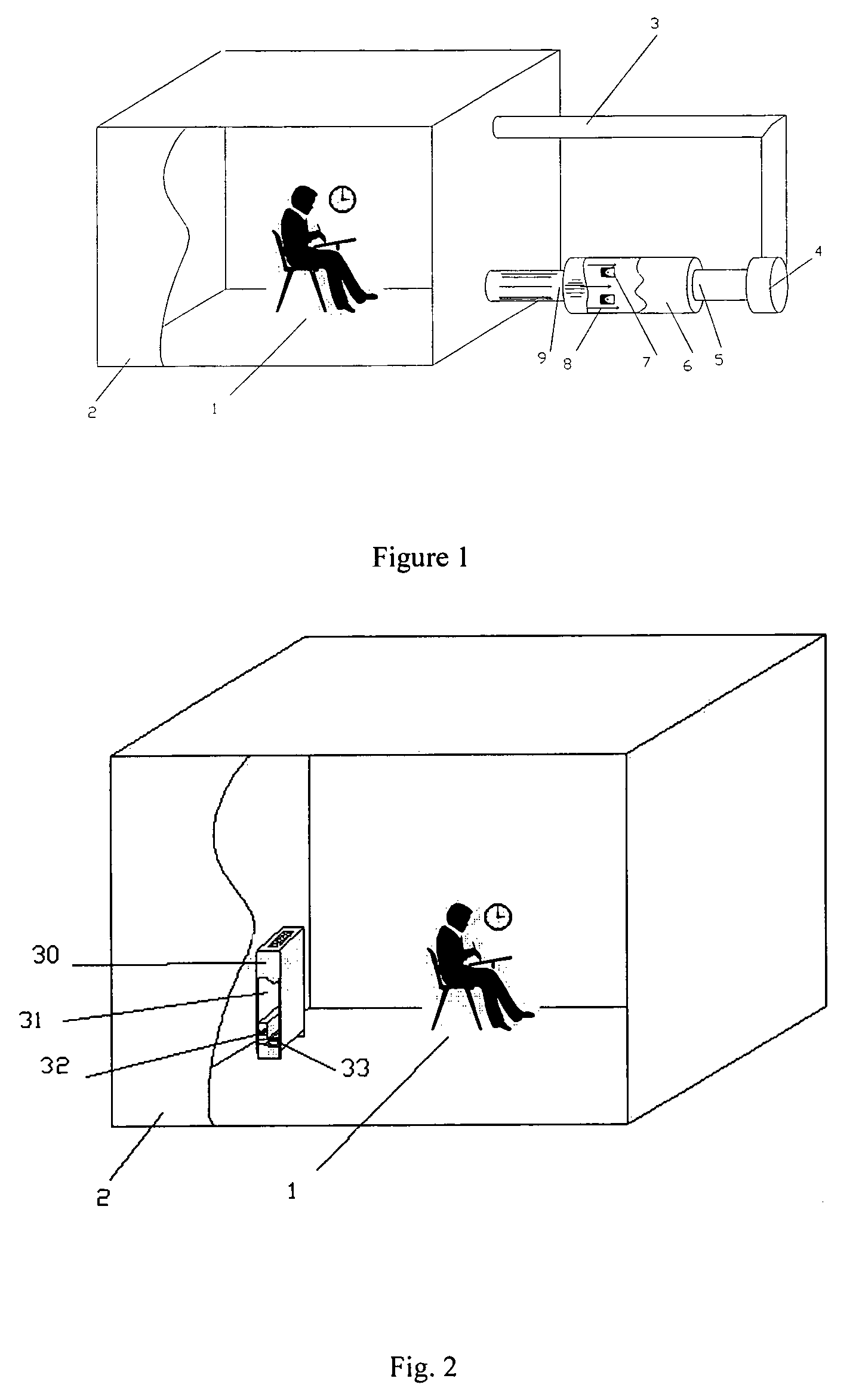System and method for medical treatment
a technology for respiratory diseases and medical treatment, applied in the field of respiratory diseases, can solve the problems of poor indoor air quality and the allergens contained in the air, adverse health effects, and little information about how to position and operate the devices to achieve the health effect of asthmatic and allergic patients, so as to reduce allergic airway reactivity, effective treatment methods, and improve health
- Summary
- Abstract
- Description
- Claims
- Application Information
AI Technical Summary
Benefits of technology
Problems solved by technology
Method used
Image
Examples
example 2
[0072]Treating and Preventing Asthma by providing treated air for breathing and reduced dosage of medicine.
[0073]After one month of the treatment according to the invention 11 asthmatic patients in the treatment group in the study described in Example 1 demonstrated an improvement in pulmonary functions and a reduction in the severity and in the number of days with asthma symptoms. 8 of the 11 patients in the treatment group kept their medication diaries before and after the treatment. Seven patients, who kept the diaries had a history consistent with moderate persistent asthma, one patient had history consistent with severe persistent asthma. After one month of the treatment according to the invention, all 7 patients with moderate persistent asthma in addition to the improvement of their health demonstrated a reduction of the dosage of controller medicine and of the risque (reliever) medicine.
[0074]The comparison of the results before and after treatment, according to the invention...
PUM
| Property | Measurement | Unit |
|---|---|---|
| wave length | aaaaa | aaaaa |
| size | aaaaa | aaaaa |
| time | aaaaa | aaaaa |
Abstract
Description
Claims
Application Information
 Login to View More
Login to View More - R&D
- Intellectual Property
- Life Sciences
- Materials
- Tech Scout
- Unparalleled Data Quality
- Higher Quality Content
- 60% Fewer Hallucinations
Browse by: Latest US Patents, China's latest patents, Technical Efficacy Thesaurus, Application Domain, Technology Topic, Popular Technical Reports.
© 2025 PatSnap. All rights reserved.Legal|Privacy policy|Modern Slavery Act Transparency Statement|Sitemap|About US| Contact US: help@patsnap.com

